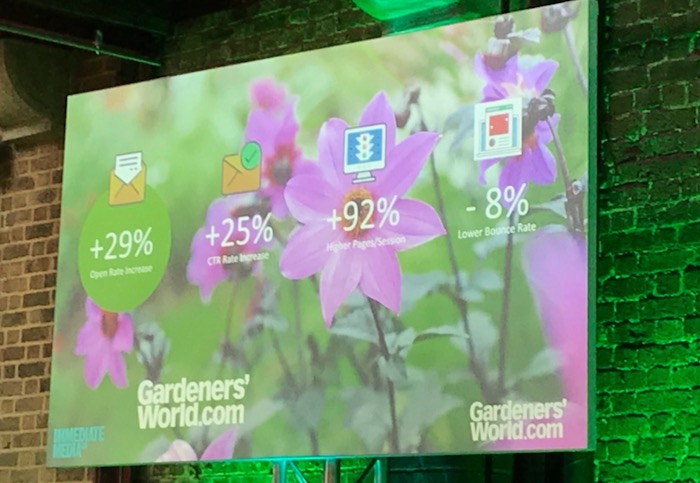
Email personalisation is a relatively simple and inexpensive way to deliver relevant content to your readers and grow your audience, said Laura Jenner, product director at Immediate Media, speaking at the PPA Festival (9 May 2019).
Immediate Media, the publisher of more than 60 consumer titles, including Radio Times and BBC Good Food, has an audience of 46 million monthly users and personalisation is one of the strategies it employed to widen its reach.
Jenner explained that, in the age of customised social feeds and cookies, users expect their content to be personalised and relevant to their preferences and interests.
According to a Digiday UK survey, 70 per cent of publishers say they are personalising their content to some extend. And while demand for personalised content is growing, the tricky bit is working out how exactly publishers should go about delivering it.
Jenner said audiences feel very different about content personalised to them based on their active participation, for example filling a form or ticking preferences, and personalisation based on behaviour mapping.
For example, if people are searching for vegan recipes because they happened to have a vegan guest that weekend and you start sending them vegan recipes for weeks to come, that may not be very helpful.
"Personalising emails results into higher audience engagement," added Matt Nash, CRM digital marketing manager at Immediate Media.
"If more than 70 per cent of your competitors do this, can you really afford not to?"
Nash explained that in a personalisation experiment with Radio Times newsletter, the publisher used machine learning to determine what content users were engaging with. Optimising newsletter content resulted in 60 per cent opening rate.
In another experiment with Gardeners'World.com, the publisher collected user data through a quiz on the website that divided users into pre-defined buckets according to what type of gardener they were.
This resulted in 29 per cent increase in open rate, 92 per cent increase in page views and an eight per cent drop in bounce rate.

Do it yourself
To get started with or improve your email personalisation strategy, Nash advised to start by collecting relevant data from your audience. To get more accurate insights, editors should proactively ask users about their preferences rather than trying to side-guess them from their behaviour.
Next, automate your emails so your users receive relevant content in their preferred way, including the best time the day and correct timezone according to their location.
Free daily newsletter
If you like our news and feature articles, you can sign up to receive our free daily (Mon-Fri) email newsletter (mobile friendly).









